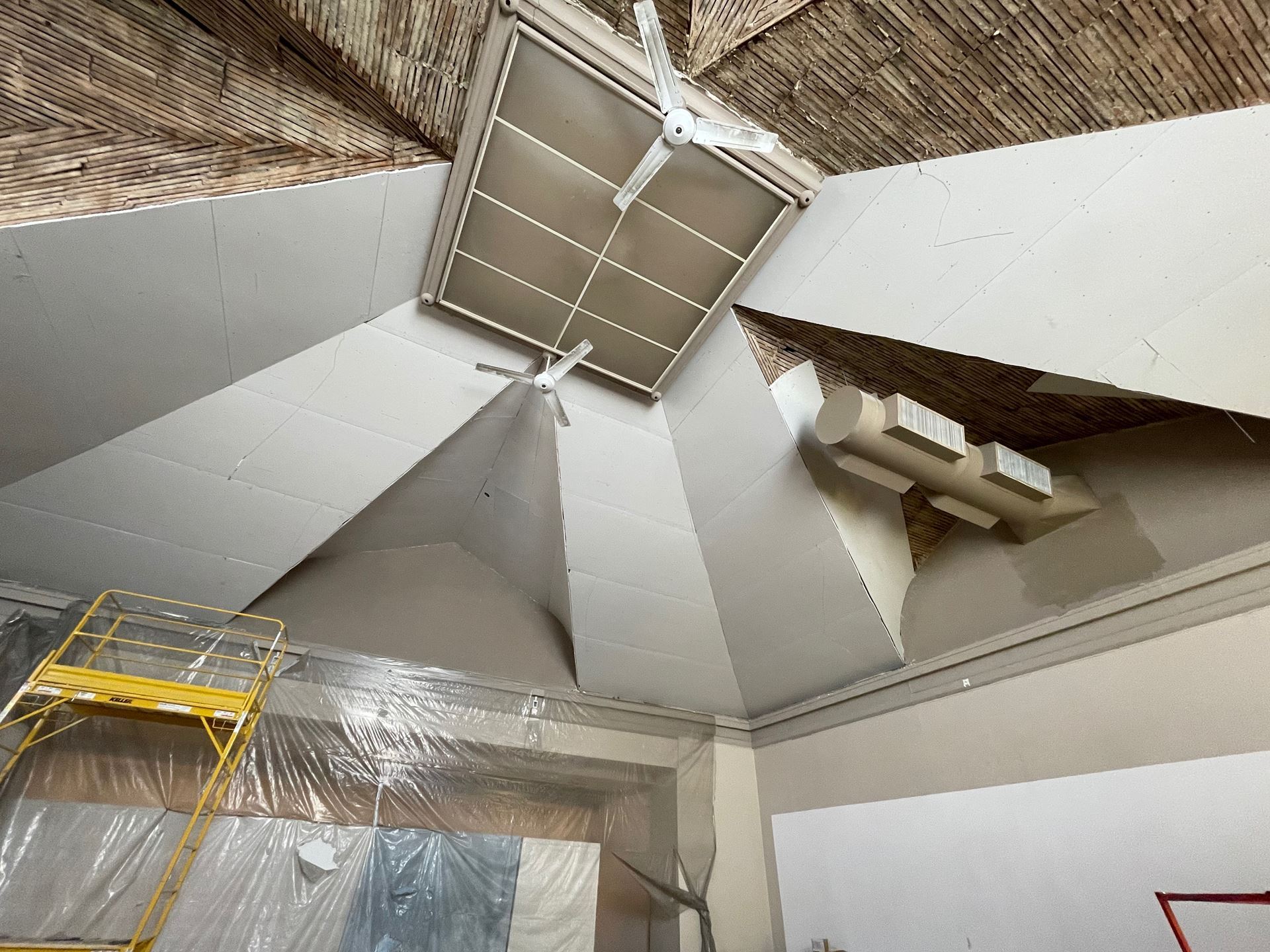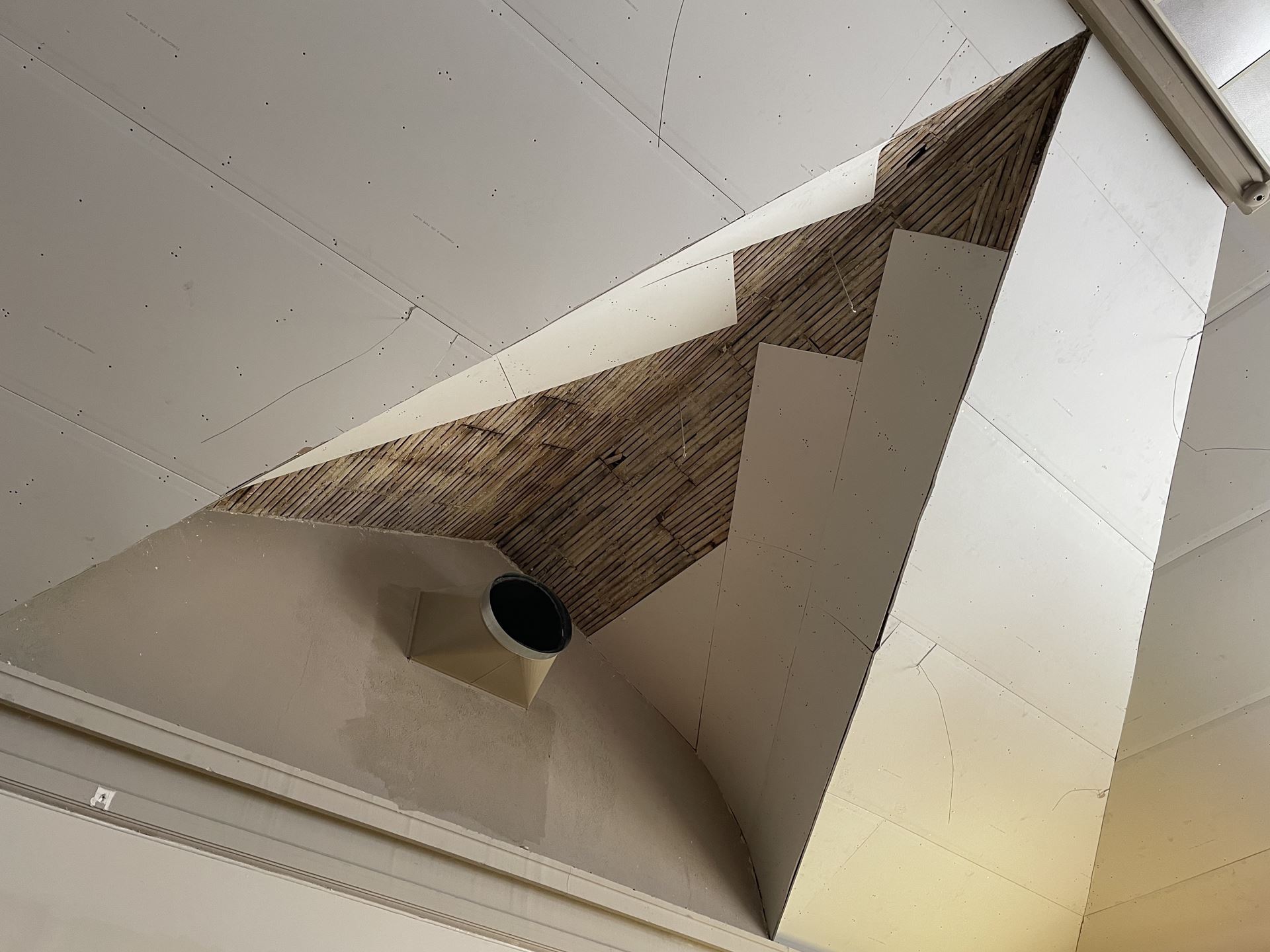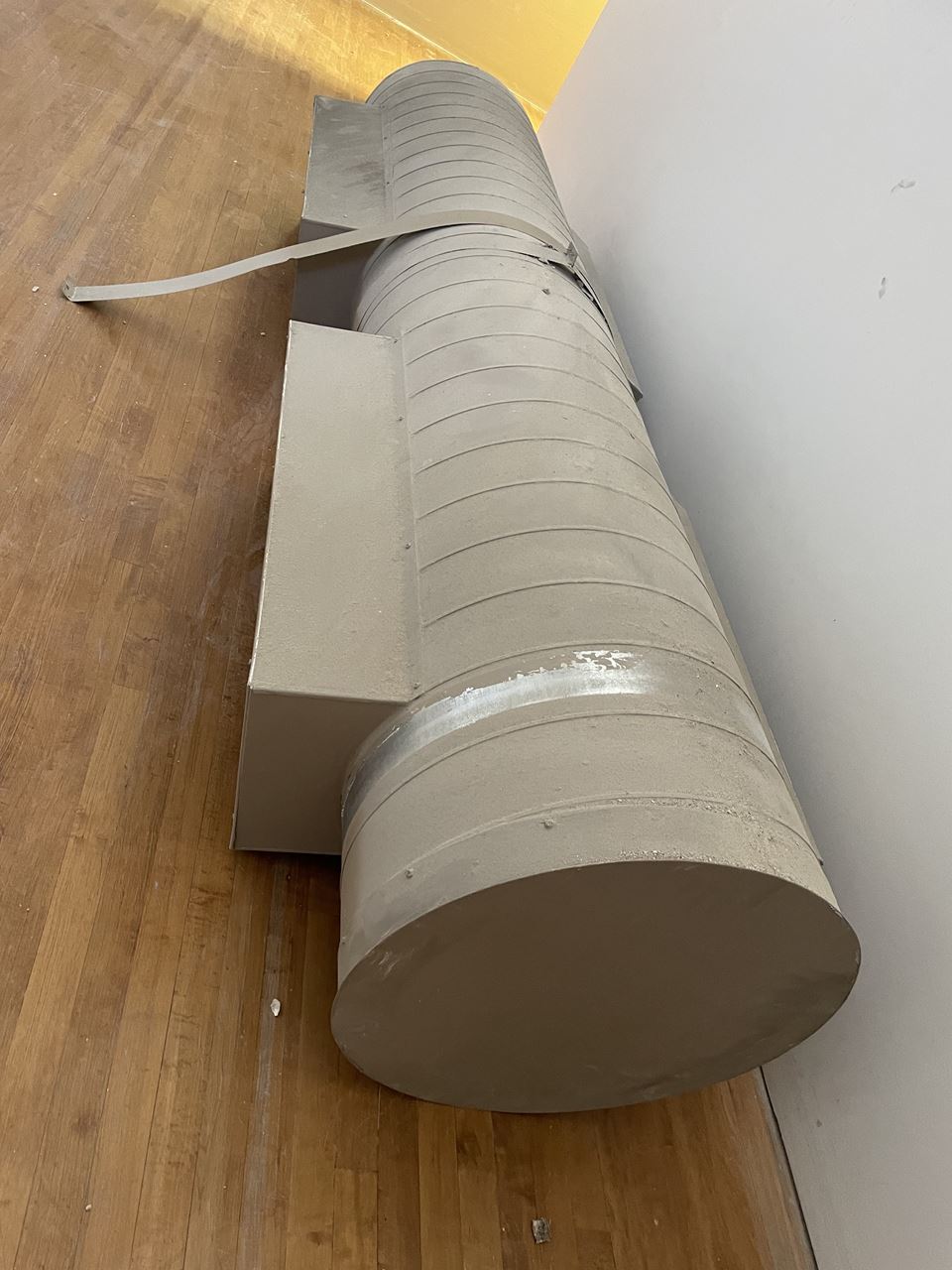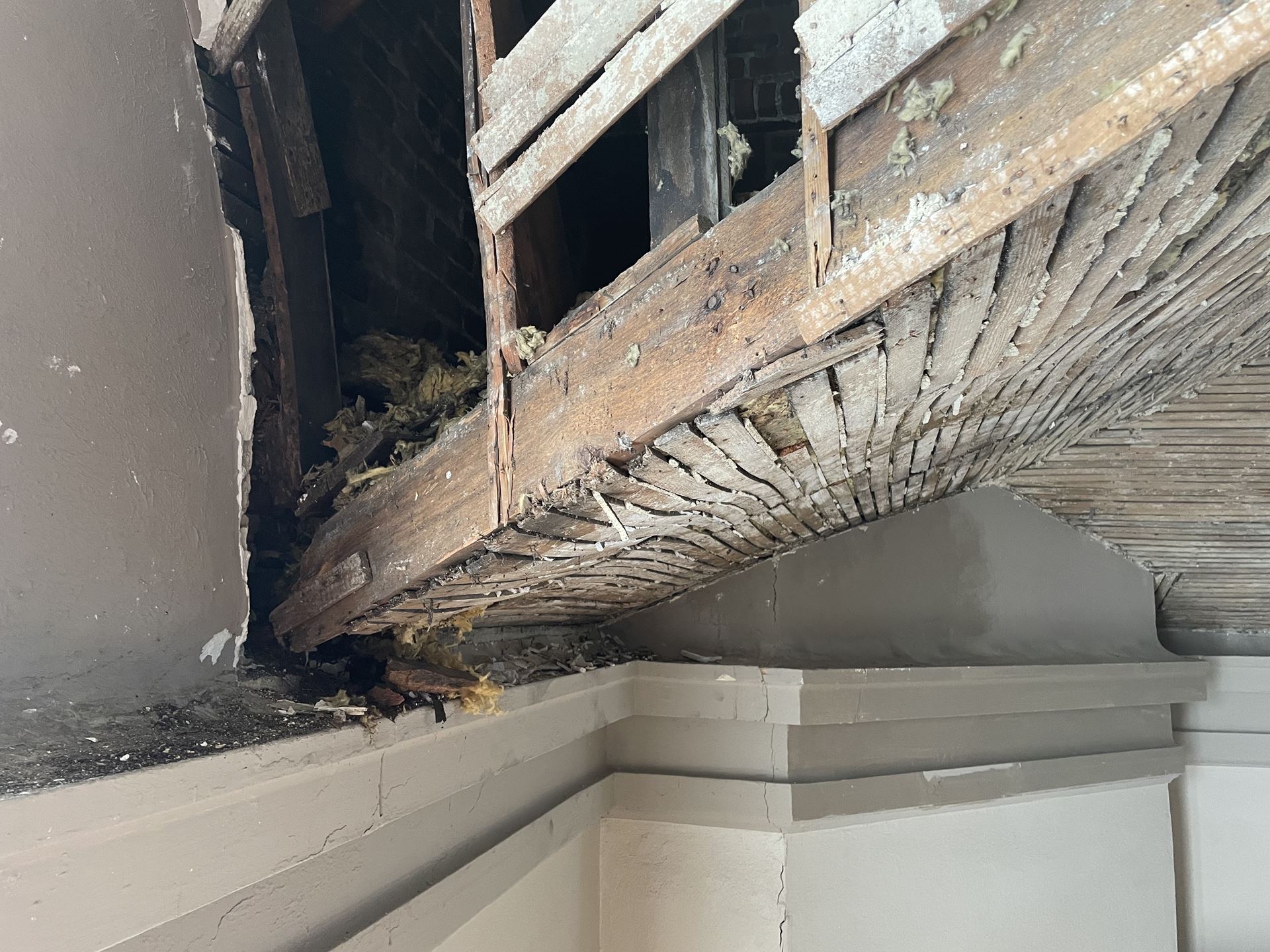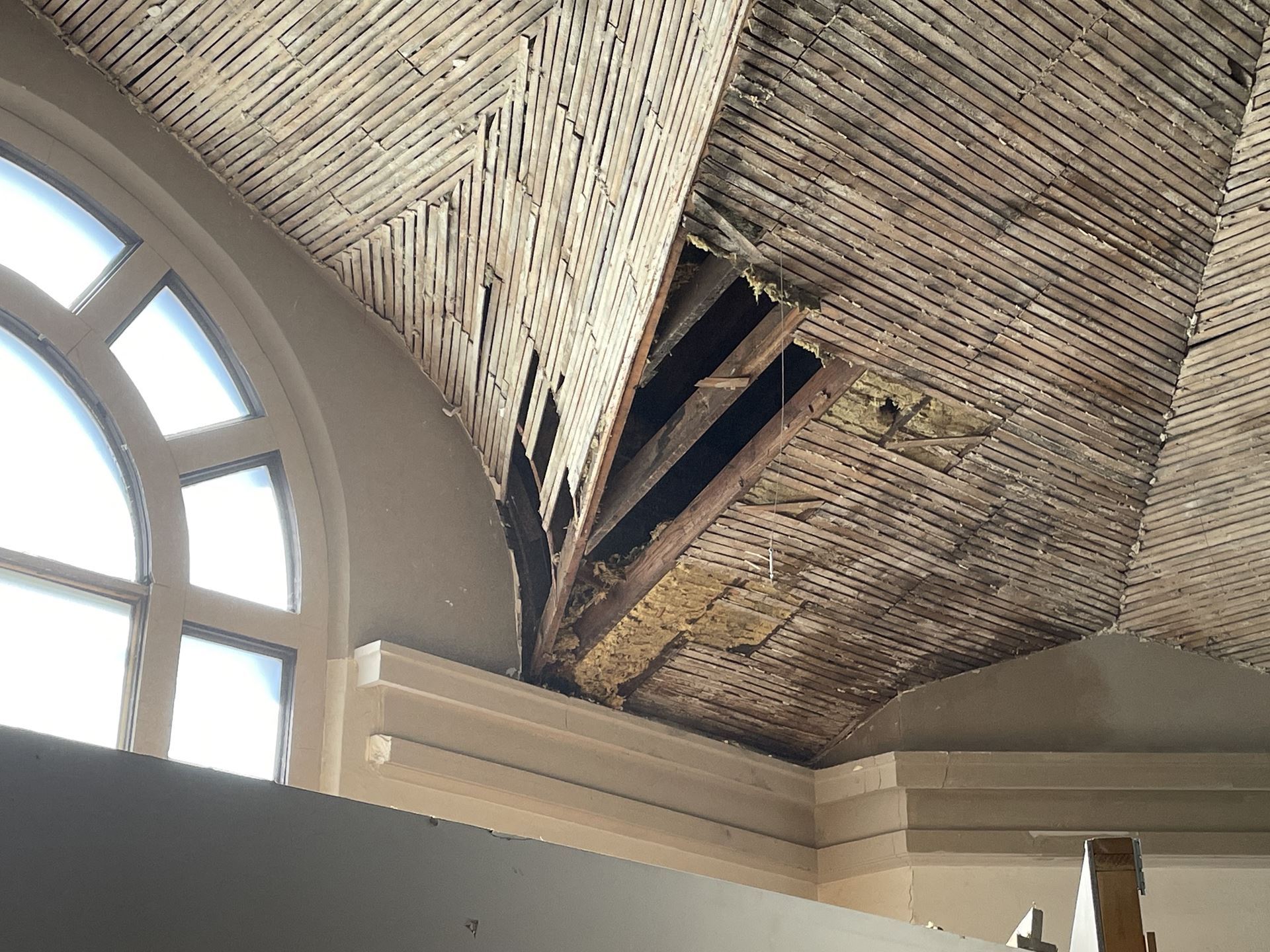
Thanks to these generous donors to our Building Renovation project:
Gay Dolan Carolyn Moon and Richard Seehauus Brian and Anne Boyden Jerry Antonini Julius Alexander Beurskens Ruth Cobb Jay and Cathie Corwin Bill and Beverly Edwards Susan Emmerson Doug and Joyce Dewitt Cathy and Dave Haab Paul and Sandra Harmon Thomas and Mary Haynes Robert and Maureen Johnson Martha Miller Timothy Ives Tim Garvey and Paula Aschim Tom and Dian Nealey Swati Pani M Takayasu | Michael Newton Hanson Steve and Debbie Parsons C Sever Carol Schrantz John Tarvin N Goldberg LC Thompson J Joni Painter Dave and Mary Ann Webb Dave and Cathy Wentworth Deanna Sears Dave and Betty Toland Ken and Joan Newgren Pam Yoder Evelyn Young Jim and Pam Raymond Jerry and Carole Ringer |
Planned Building Projects completed in 2021 to be funded in part from State of Illinois Capital Bill dollars:
- Resurfaced Public Parking Lot
- Replace Brandt Gallery Blinds with frosted UV film
- Building Tuck Pointing
- New Roof on Armstrong Gallery, Staging Area, Loading Dock
- Remodeled Ceramics Classroom
- Refreshed Landscaping
- New Window in Dolan Gallery
- New Air Conditioner for north side of Brandt Gallery
The McLean County Arts Center's facilities were design by local architect Arthur Lowe Pillsbury for the Congregational Church in 1908. It existed as a church until our organization purchased the building in the late 1970's. Much remodeling was done in those early days, and it was spearheaded by the efforts of Nancy Merwin.
Mrs. Merwin was three-time president of the MCAC Board of Directors. The wife of Davis U. Merwin, publisher of The Pantagraph from 1968 to 1980, she was a great force in the community and together they were foundational in the establishment of the Path Crisis Center, the Merwin Nature Preserve, and the growth of the McLean County Arts Center into the public-centered non-profit we are today. Our building is named in their honor.
During the last year it has been our effort to make significant improvement to our facility. The brick portion of our building underwent tuck pointing, the ailing large maple tree by the tower was removed, the roof over the Armstrong gallery, staging area, and loading dock was replaced, and extensive efforts were made to refresh our exterior landscaping. Additionally, we have remodeled the ceramics classroom, and continue to refresh the other classroom spaces. We also replaced the large window in the Dolan Gallery, and repainted that exhibition space. Finally, we removed the forty-year old blinds on the windows in the Brand Gallery. They were replaced with a frosted UV protectant film, allowing daylight to fill that space, changing the character of the room in a wonderful way.
With vaccines readily available, we anticipated everything would soon be returning to normal.



However, on Sunday, May 9th at 7:13 A.M. our plans changed. Thanks to our security cameras we have this footage:
A three foot by five foot section of the gallery ceiling gave way in the early morning hours. You'll notice the dust that rises from the falling plaster. That was both good and bad news. The good news is that the damage is not the result of roof leaks. The terra cotta tile remains in good shape and the ceiling is dry. The bad news is that this plaster failure could be a harbinger of things to come.
As high as the ceiling is in the Brandt gallery, an attic exists above it. While I have not walked over that section, it is accessible by ladder from the Boyden tower room. Over my many years here I have been in the tower a handful of times.

That attic space is subject to wide seasonal temperature and humidity shifts and, over time, these have weakened the plaster's hold on the lath. Plaster at that time was made with horse hair and was much thicker than our contemporary drywall. It is exceptionally heavy.
Thanks to our removal of the blinds on the gallery windows we could see clearly a large number of additional cracks in the ceiling's aged plaster. After meeting with several contractors, it became even more apparent that we would need to engage in a systematic reworking of the entire ceiling, rather than just patching a small area.
A job broken down into parts
This presented other sets of problems. First, our insurance would only cover repair of the damaged area. Second, no contractor could handle all the parts of the process. Third, with housing prices suddenly taking off, contractors were hard to schedule and in the end, we would need several. One to remove the existing plaster. A second to put up and finish the drywall, which is no small feat given the height of the ceiling. Finally, a third contractor to paint the ceiling. Getting them all on the calendar would be complicated enough. What we learned next was tougher.
Another surprise
Our lighting system in the Brandt gallery was an engineering marvel. At the time of the conversion from a church, bids were received to replace the existing florescent lighting system with gallery lights. Bids to install a professional lighting grid were well outside the scope of the organization's budget. The Executive Director at that time, Terry Bush, worked with a team to construct a very functional lighting grid out of 1 x 4 pine. Suspended by wire through the old plaster and into the attic's rafters, it was built to last. However, as the lighting system was from the 1980's, it had become very difficult to find replacement fixtures to fit the obsolete track style. With the assistance of our electrician we had managed to find a few, but they were a rarity and proved costly.
But as we discovered, the whole grid would need to be removed in order to provide access for the teams of demolition contractors, drywallers, and painters. I elected to remove grid myself, which made our the board of directors anxious.

We received word from the electricians that our new lighting will be more expensive than we had hoped. To replace the old lighting grid with new LED fixtures on a modern track will be $40,000. This is an expense not covered by insurance. After thoughtful and meaningful discussion at the board meeting, it was agreed to accept the bid. It is our hope that fundraising will help make this happen.
Week one: Plaster Removal
The following Monday, August 30th, the first set of contractors arrived at 7:00 A.M. to begin removing the old plaster. Over three days they successful loaded the truck several times with the debris. We had naively imagined that the north side of the Brandt Gallery, the section where the ceiling remained intact, would be suitably protected by plastic sheeting to remain operational. Now, the exhibitions would need to be juggled to allow for the progress to continue.
Removal of the 113 year old horse hair plaster

The dumpster was filled multiple times.
The lath was beautiful.
Week two: Electric rough in
Not a lot to see with this, Anderson Electric was just pulling wires.
Week three: Drywall to begin
Week four: Job stop for Rafter Repairs
It has been a very anxious week with building work. The drywalling crew pulled off the project when they found a couple sections of the ceiling by the south wall to be unstable. We called in our contractor, Campbell Construction, to take down the large blower stack and to check out these two areas.
The east side of the Brandt Gallery ceiling with the Vent removed.
The vent. To be cleaned and painted white.
The rafters in these two locations had some unexpected bounce when the drywallers were attempting to secure sheetrock to the ceilings. These board inset into a notch on the exterior wall to support the ceiling. It seems that many years ago there was a significant issue with the building that led humidity rotting away ceiling rafter that attach to the south wall. This is on both side of the large south window, although the interior right side is much worse.
The rafter has rotted on the end, separating from the wall. It was supported by a brace holding that ceiling rafter, but that flying rafter dislodged, too. Both rafter sit within interior notches on the exterior wall. You can see in this photo the warp of the lath following the release of the rafter support. You can see here where the rafter's rotted end has pulled from the wall.

This is the flying rafter, unmoored from the exterior wall.
The lath being removed to replace the damed section of the rafters. They will be sistering in new boards to reconnect the body of the old rafters to the wall.
Notes by Doug Johnson, MCAC Executive Director
In order to protect the integrity of the building and the safety of our patrons we are removing the entire ceiling plaster. It will be replaced with new drywall and new lighting throughout the Brandt gallery. This unanticipated project will cost about $100,000. We will be excited to debut the new space at our holiday treasures exhibition in November.

All donations in support of this project are appreciated! Donations of $500 and over will be
permanently acknowledged on a new plaque to be installed in the remodeled gallery.




